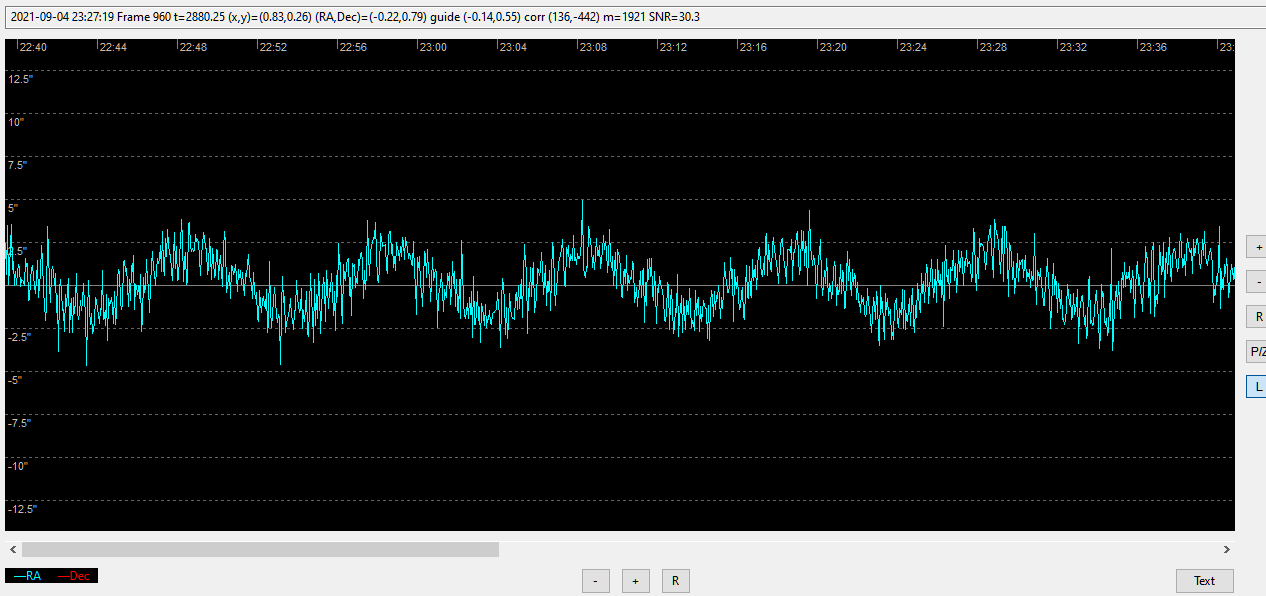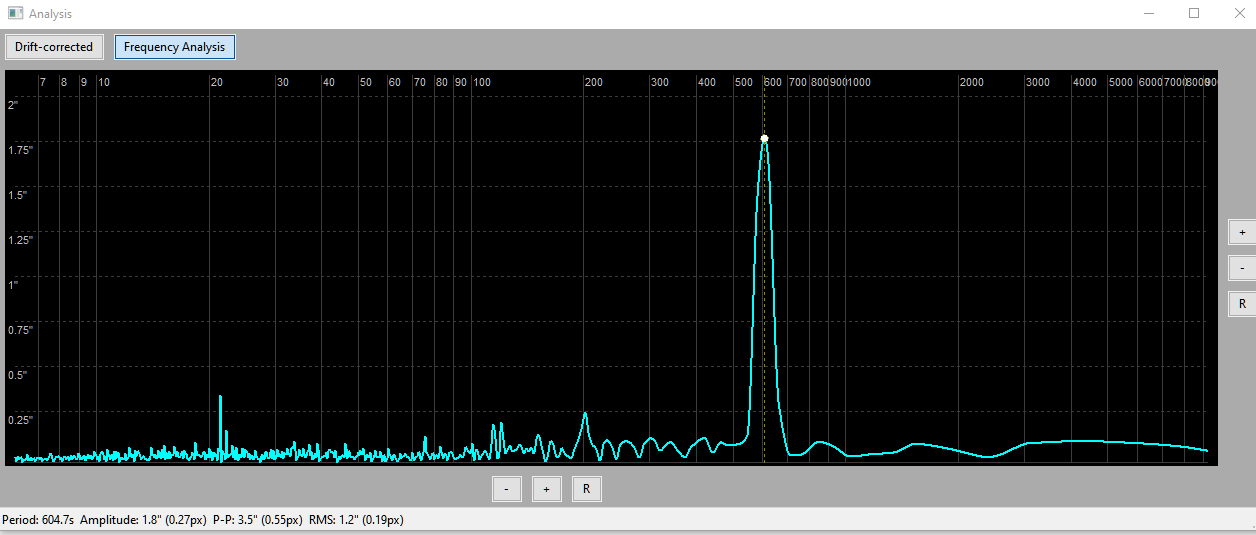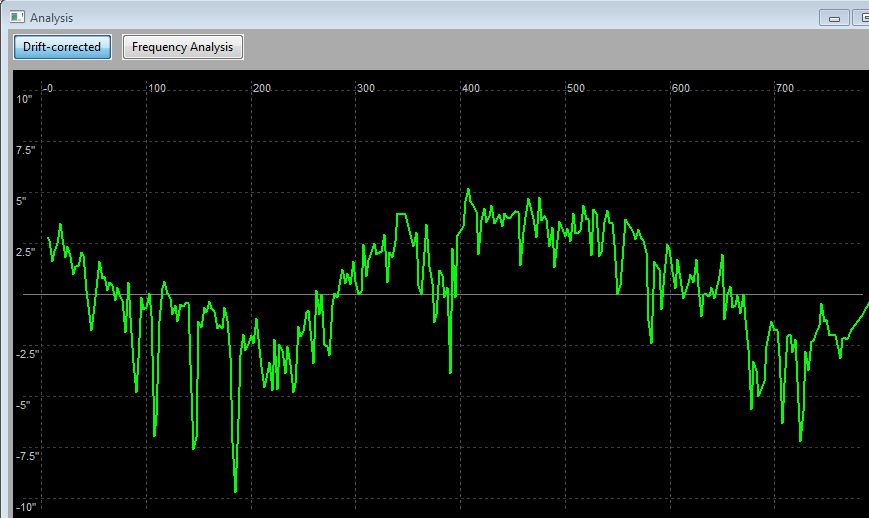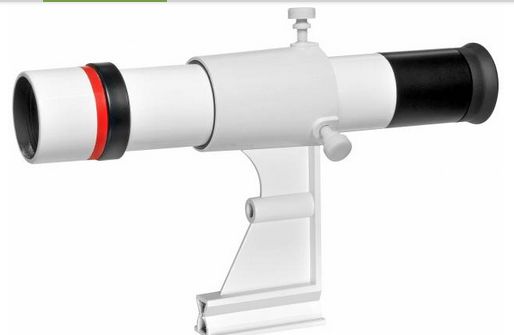Guiding problems with iOptron CEM26
989 views
Skip to first unread message
Alexey
Sep 19, 2021, 3:03:03 AM9/19/21
to Open PHD Guiding
Hello everyone!
I tried to do guiding with my first EQ mount (iOptron CEM26) and from very beginning PHD2 was showing me pretty bad graph.
First thing I did was asking for help in several forums. I did everything they advised me:
- leveling with external bubble levels
- balancing
- cables management
- higher exposure for guide camera
- I did PA as good as I can by using drift alignment (Polaris is behind the wall)
- dew is not an issue. I just don't have it. Maybe because shooting from my balcony
- wind is also not an issue because setup is surrounded with walls
- tried guiding assistant and applied suggestions
All this was done several times from the beginning and I think it didn't change anything.
Also I tried to reduce the backlash on DEC by loosing and tightening gear meshing. Nothing changed.
Last 6 months hobby gave me more headache rather than fun so I'm close to the point where I would like to sell my setup and forget
about it.
My scope weights around 12 lbs with DSLR and guide scope. Maximum load capacity for this mount is 26 lbs exclude counterweight.
At first I was thinking that my scope is too heavy for this mount but one of the owners of cem25p said that his scope is 17 lbs
and I saw his graph and pictures. They are fine.
Another example. The guy is shooting from balcony like me. He just took his mount and placed it on the same spot without doing any PA.
And even with such rough approach his "target" window was showing that star is always within 0.5.
I'm asking to take look at my logs and give me your opinion. Is this mount dead on arrival and I should do refund or everything is fine ?
My thoughts. It has periodic errors on RA and backlash on DEC.
Logs:
Since I have limited field of view maximum session length is 2 hours.
Thank you very much for your time!
wave...@talktalk.net
Sep 19, 2021, 5:07:59 AM9/19/21
to Open PHD Guiding
Hello Alexey, I'll take a shot at you problems, but the experts will give you more comprehensive advice.
Yes, there's periodic error in the RA drive, almost all do. However, I don't see this is a major problem. There's almost certainly some backlash too, but this is resolvable. I'd say your easiest fix is to use a longer FL guidescope. The small 120mm type are generally regarded as 'toys', so I'd suggest swapping that out for a larger one with a good quality fitting. You need a guiding image scale around half the current figure, so FL 250mm or so will make a difference.
Here's the RA trace from a typical log.

Frequency Analysis of this shows a very nice PE distribution with the main contribution at 604 seconds.
 T
TThe magnitude of this is relatively modest at 3.5 arcsec Peak-Peak, which could be reduced by some corrective training (I assume your mount can do this). PHD may also handle this better by using longerer guidescope, I'm not sure.
So, I suspect with some PE adjustment/training and a smaller image scale and with unidirectional guiding according to amount of Dec backlash, you should make some progres.
Hopw this helps.
- Jack
Alexey
Sep 19, 2021, 6:30:04 AM9/19/21
to Open PHD Guiding
Hello Jack!
Despite no one advised me to change my guide scope I`ve had such thoughts. How do you think is it possible to achieve
guiding at around 1 arc.sec with FL of 250 without touching the internals ?
воскресенье, 19 сентября 2021 г. в 12:07:59 UTC+3, wave...@talktalk.net:
wave...@talktalk.net
Sep 19, 2021, 7:43:33 AM9/19/21
to Open PHD Guiding
Alexey, it would be helpful to have some details of the imaging scope. I'm not familiar with the use of DSLR for imaging so that may present its own issues with balance, etc. I think you should try get a position set out for the tripod that will give you acceptable polar alignment each time. I noticed your first log shows the calbration was done with a large polar alignment error (100 arcmin or so). You really need to be within 5arcmin or better. If you have to place the mount on your balcony each time you want to take images, the polar alignment should be checked each time. The Guiding Assistant will help with that. The RA and Dec guide rates are set to 0.5x sidereal or so, which will make guiding with a very small guidescope more difficult. I'd suggest setting the rate closer to 1x siderial if you can. This may be controlled by the Ioptron/ASCOM mount driver, I don't know. The experts will give better advice.
Once the above is set up, Run Calibration near Dec 0 and your meridian. Fix any alerts that gives and when an acceptable Calibration is obtained follow this with a Guiding Assistant session long enough to assess the basic performance of the unguided mount (run it for several worm cycles). See the User Manual on creating a Baseline Guiding log. This will give much better data about the setup and where you might concentrate your attention. Learn the basics of Guide Log analysis using the Log Viewer tool. You can download all these from the PHD2 Guiding website. When the experts come back online, I'm sure they will be able to give you much better advice than a beginner like me.
Cheers,
- Jack
Alexey
Sep 19, 2021, 8:54:58 AM9/19/21
to Open PHD Guiding
Got it!
BTW don't know what happened during my first log but usually I keep my tripod at the same place and check balance and polar alignment every time. Maybe I hit the tripod before session or something.
Imaging scope - https://www.bresser.de/en/Astronomy/Telescopes/BRESSER-Messier-AR-102s-600-Hexafoc-OTA.html
воскресенье, 19 сентября 2021 г. в 14:43:33 UTC+3, wave...@talktalk.net:
wave...@talktalk.net
Sep 19, 2021, 11:31:16 AM9/19/21
to Open PHD Guiding
Alexey, can you upload a daytime photo of your complete mount/scopes/cameras setup? I'm sure the PHD2 gurus will be able to suggest improvements that may be needed and what you can expect to achieve from your equipment.
Cheers,
- Jack
Alexey
Sep 19, 2021, 12:27:23 PM9/19/21
to Open PHD Guiding
Sure. Tomorrow I`ll do that.
воскресенье, 19 сентября 2021 г. в 18:31:16 UTC+3, wave...@talktalk.net:
bw_msgboard
Sep 19, 2021, 12:37:54 PM9/19/21
to open-phd...@googlegroups.com
Hi Alexey, sorry you're having so much trouble. I don't
think the problem is with your mount, I think you have substantial problems
elsewhere that are creating too much mechanical instability. If we look at
the Guiding Assistant run, it's useful to look at how much the guide star is
moving around in Dec (Dec in green):

This is basically awful. The main point here is that the
Dec motor isn't even running so this isn't being caused by the mount's tracking
system. Look at all the abrupt movements of as much as 10 arc-seconds -
none of this can be guided out. There are several possibilities for what's
causing this but we can't distinguish between them - but here's a starter
list:
1. Flimsy, stalk-mounted finder-scopes: I did a
quick search on the main scope you're using and I found this
image:

Is this what you're using? If so you're probably
not likely to get anywhere. It looks like a loose-fitting tube with two or
three flimsy thumbs-screws, not something that was ever intended to be a
guide scope. Worse still, it's mounted on a long stalk that puts it way
above the main scope. You need to think about the mechanical tolerances
that are required here. Because of the short focal length and tiny guide
camera pixels, an unwanted movement of the guide camera by 4 microns translates
to a guiding error of 6.5 arc-seconds. If you're trying to get guiding
errors below 1 arc-sec, movement that large is fatal. Remember, the
typical thickness of a human hair is about 50 microns.
2. Operating from a deck: If you're running
everything off a deck, you already have a big potential source of
instability. Some people are able to do it but I think that's a matter of
rigidity and the type of deck surface in addition to a lot of good luck.
If you're on the deck with the scope, I don't see how it can work - remember, a
4 micron movement is a big problem for you.
3. Wind: If you're getting any kind of wind gusts, you
can see problems of this sort although I assume you'd be aware of
that.
If you're going to improve your guiding assembly, you need to
emphasize rigidity and mechanical stability. The guide scope axis should
be kept as close as possible to the main OTA, and thumb-screw arrangements
should be avoided. You should try to get to a point where your guider
image scale is more in the range of 3-4 arc-sec/px or less. If you can get
these mechanical problems resolved, you should upgrade to the latest release of
PHD2 and take advantage of multi-star guiding. But until you've fixed the
mechanical problems, the software isn't going to help you
out.
Good luck,
Bruce
From: open-phd...@googlegroups.com [mailto:open-phd...@googlegroups.com] On Behalf Of Alexey
Sent: Sunday, September 19, 2021 12:03 AM
To: Open PHD Guiding
Subject: [open-phd-guiding] Guiding problems with iOptron CEM26
--
You received this message because you are subscribed to the Google Groups "Open PHD Guiding" group.
To unsubscribe from this group and stop receiving emails from it, send an email to open-phd-guidi...@googlegroups.com.
To view this discussion on the web visit https://groups.google.com/d/msgid/open-phd-guiding/8bad233c-e848-4618-8681-44cf4a5615a8n%40googlegroups.com.
You received this message because you are subscribed to the Google Groups "Open PHD Guiding" group.
To unsubscribe from this group and stop receiving emails from it, send an email to open-phd-guidi...@googlegroups.com.
To view this discussion on the web visit https://groups.google.com/d/msgid/open-phd-guiding/8bad233c-e848-4618-8681-44cf4a5615a8n%40googlegroups.com.
Alexey
Sep 19, 2021, 4:32:23 PM9/19/21
to Open PHD Guiding
Hello Bruce!
Don't be sorry. I'm newbie and it's possible that I messed something up. And I believe I did.
So the DEC motor isn't working because errors are too high and it doesn't even try to do something with it ?
> Is this what you're using? If so you're probably not likely to get anywhere.
No. I'm not using it. Not even attached to my scope.
Here is my guide scope - https://www.amazon.com/SVBONY-SV165-Finder-Guiding-Cameras/dp/B088D37YMZ
> an unwanted movement of the guide camera by 4 microns translates to a guiding error of 6.5 arc-seconds
Wow! Didn't know it's so crucial.
> Operating from a deck: If you're running everything off a deck, you already have a big potential source of instability.
I have a concrete floor.
> Wind: If you're getting any kind of wind gusts, you can see problems of this sort although I assume you'd be aware of that.
Usually I sit close to my rig and I would have noticed.
> You should try to get to a point where your guider image scale is more in the range of 3-4 arc-sec/px or less.
Ok. First thing I need to do is to attach my guider better to my scope.
Thank you guys!
воскресенье, 19 сентября 2021 г. в 19:37:54 UTC+3, bw_m...@earthlink.net:
bw_msgboard
Sep 19, 2021, 4:59:38 PM9/19/21
to open-phd...@googlegroups.com
See below...
Sent: Sunday, September 19, 2021 1:32 PM
To: Open PHD Guiding
Subject: Re: [open-phd-guiding] Guiding problems with iOptron CEM26
To: Open PHD Guiding
Subject: Re: [open-phd-guiding] Guiding problems with iOptron CEM26
Hello Bruce!
Don't be sorry. I'm newbie and it's possible that I messed something up.
And I believe I did.
So the DEC motor isn't working because errors are too high and it doesn't
even try to do something with it ?
No,
no. With an equatorial mount, tracking an object in the sky is done only
by the RA drive - the Dec drive doesn't move unless it's told to for a guide
command. That's why equatorial mounts were invented. You should
probably read up on the RA/Dec coordinate system and the celestial sphere to
understand why this is true.
> Is this what you're using? If so you're probably not likely to
get anywhere.
No. I'm not using it. Not even attached to my scope.
Here is my guide scope - https://www.amazon.com/SVBONY-SV165-Finder-Guiding-Cameras/dp/B088D37YMZ
Ok,
probably only slightly better. I think you should get something much
better. Clamshell mounting
rings, dovetail mounting, longer focal length, rigid attachments
everywhere.
> an unwanted movement of the guide camera by 4 microns translates
to a guiding error of 6.5 arc-seconds
Wow! Didn't know it's so crucial.
> Operating from a deck: If you're running everything off a deck,
you already have a big potential source of instability.
I have a concrete floor.
> Wind: If you're getting any kind of wind gusts, you can see problems
of this sort although I assume you'd be aware of that.
Usually I sit close to my rig and I would have noticed.
If
you're sitting close to the rig, you can still generate vibrations if you're
moving around. 4 microns, 4 microns... :-)
To
view this discussion on the web visit https://groups.google.com/d/msgid/open-phd-guiding/656c714c-5d75-41d5-970a-0a3db8c033e5n%40googlegroups.com.
Alexey
Sep 20, 2021, 7:59:17 AM9/20/21
to Open PHD Guiding
> No, no. With an equatorial mount, tracking an object in the sky is done only by the RA drive - the Dec drive doesn't move unless it's told to for a guide command.
I'll keep that in mind.
> Ok, probably only slightly better. I think you should get something much better. Clamshell mounting rings, dovetail mounting, longer focal length, rigid attachments everywhere.
Got it!
> If you're sitting close to the rig, you can still generate vibrations if you're moving around. 4 microns, 4 microns... :-)
Sure. I know about it. I'm acting like a ninja when I'm there :)
OK. I guess I have all the information I need for now. It's time to do something with the guider and do some tests!
Will get back later with the results.
воскресенье, 19 сентября 2021 г. в 23:59:38 UTC+3, bw_m...@earthlink.net:
bw_msgboard
Sep 20, 2021, 10:36:45 AM9/20/21
to open-phd...@googlegroups.com
Ok. While you're looking at all this, also check for any
possible sources of vibration either in the mount or from something like a
camera fan.
Good luck,
Bruce
Sent: Monday, September 20, 2021 4:59 AM
To: Open PHD Guiding
To: Open PHD Guiding
To
view this discussion on the web visit https://groups.google.com/d/msgid/open-phd-guiding/8a1b54a5-efde-4e3c-acb9-534759d35040n%40googlegroups.com.
Alexey
Sep 20, 2021, 1:07:24 PM9/20/21
to Open PHD Guiding
> Ok. While you're looking at all this, also check for any possible sources of vibration either in the mount or from something like a camera fan.
I'll try.
Thanks!
понедельник, 20 сентября 2021 г. в 17:36:45 UTC+3, bw_m...@earthlink.net:
Bruce Waddington
Sep 21, 2021, 12:11:58 AM9/21/21
to Open PHD Guiding
Hi again. Sorry to keep sending you comments on this, but I keep thinking about it. I'm always a little frustrated when I can't point to a specific thing to look at, and it should be clear we're just dealing with educated guesses when the problem isn't directly related to guiding. So here's how I would proceed, recognizing that you don't want to spend a bunch of money and then find out the problem didn't get resolved:
1. Do everything you can to really tighten everything up with your current guiding assembly and also insure there is no possibility for cables to drag or tug on the guiding assembly.
2. Run some dedicated guiding tests and see if the situation has improved significantly.
3. If it hasn't, then try guiding through your main scope with no imaging involved. Since you're using a refractor, this should be pretty easy to do - just find a way to insert your guide camera into the main scope and re-focus it. Then follow this procedure to correctly configure PHD2 for the new (test) guide scope and run the baseline tests described here:
If the problem goes away or improves substantially, then you can conclude the problem lies with the current guide scope assembly. If not, you will have to look elsewhere but at least you won't have spent a bunch of money buying new gear.
Regards,
Bruce
Alexey
Sep 21, 2021, 9:24:37 AM9/21/21
to Open PHD Guiding
> Hi again. Sorry to keep sending you comments on this, but I keep thinking about it. I'm always a little frustrated when I can't point to a specific thing to look at
Hi Bruce! It's really nice to hear that.
This morning I thought to myself that camera cable may be the reason. But then another thing came to my mind.
My guider has focus ring at front side and when it slightly unscrewed it wobbles. So maybe this is where my problem hides.
I'll try to move camera back and forth instead of using focus ring and then fix the cable with zip ties.
BTW the idea with main scope is really great. Why it didn't appear in my head.
вторник, 21 сентября 2021 г. в 07:11:58 UTC+3, bw_m...@earthlink.net:
Alexey
Oct 8, 2021, 5:00:05 AM10/8/21
to Open PHD Guiding
Hello guys!
Finally I did what Bruce advised me.
1. Here I used guide scope with all the cables fixed as good as possible.
Also I decided not to use focus ring on guide scope but achieve focus by moving
camera.
2. Guide with primary scope only.
Of course I did balance before each try. But PA was done only once when I did guiding
with guide scope (1).
Tried to examine it by myself and in my opinion I have slightly better results
with guide scope (1) compared to previous logs. And I got the same or even worse results
when I used primary scope only (2).
Speaking about images and star shapes. As I said in my view best results was achieved
with guide scope (1) and I even thought I'll use them to produce final image but
after zooming in I noticed that stars aren't round. I would say only 10-20% of all images
are decent.
My conclusion. It's either a mechanical problem mostly on RA axis or bad PA or both.
What do you think ?
вторник, 21 сентября 2021 г. в 16:24:37 UTC+3, Alexey:
bw_msgboard
Oct 8, 2021, 5:31:47 PM10/8/21
to open-phd...@googlegroups.com
Hi Alexey. You've done a good job with this, well
done. I agree, the results point to the performance of the mount rather
than the guide scope arrangement. I would say the mount has pretty
severe uncorrected periodic error - here's a look:

This shows over a 50 arc-sec peak-peak oscillation. And
we can see most of it is occuring at the worm period of the
mount:

I suggest you take this up with iOptron - it's hard for me to
imagine they would think this is normal.
There's also a 1-second reversal delay on the Dec axis but I
think you can try using the PHD2 Dec backlash compensation feature for
that. And you should restore all the guide parameters to their default
settings, it looks like you've been fiddling around with Dec
aggressiveness.
None of these problems have anything to do with polar
alignment, your alignment was fine.
Good luck,
Bruce
Sent: Friday, October 08, 2021 2:00 AM
You received this message because you are subscribed to a topic in
the Google Groups "Open PHD Guiding" group.
To unsubscribe from this topic, visit https://groups.google.com/d/topic/open-phd-guiding/guG4t6VOj2M/unsubscribe.
To unsubscribe from this group and all its topics, send an email to open-phd-guidi...@googlegroups.com.
To view this discussion on the web visit https://groups.google.com/d/msgid/open-phd-guiding/9fd77f25-6b68-4660-8640-ca782f9b6d68n%40googlegroups.com.
To unsubscribe from this topic, visit https://groups.google.com/d/topic/open-phd-guiding/guG4t6VOj2M/unsubscribe.
To unsubscribe from this group and all its topics, send an email to open-phd-guidi...@googlegroups.com.
To view this discussion on the web visit https://groups.google.com/d/msgid/open-phd-guiding/9fd77f25-6b68-4660-8640-ca782f9b6d68n%40googlegroups.com.
Alexey
Oct 9, 2021, 5:07:21 AM10/9/21
to Open PHD Guiding
Hello Bruce!
Thank you very much for your time, I get it.
Jack thank you too.
I really appreciate your help guys!
суббота, 9 октября 2021 г. в 00:31:47 UTC+3, bw_m...@earthlink.net:
Reply all
Reply to author
Forward
0 new messages
